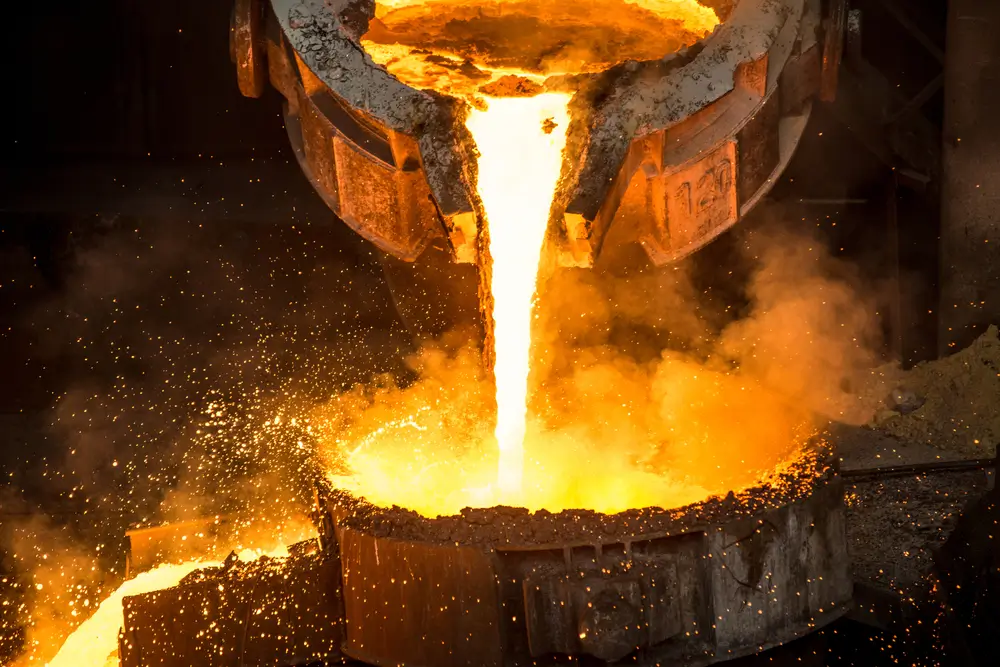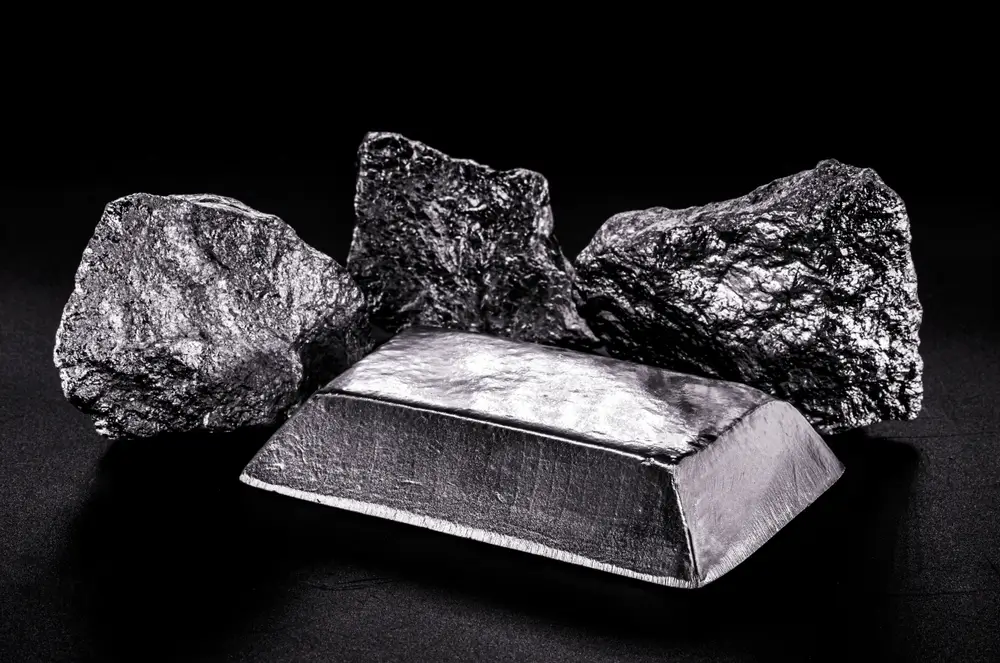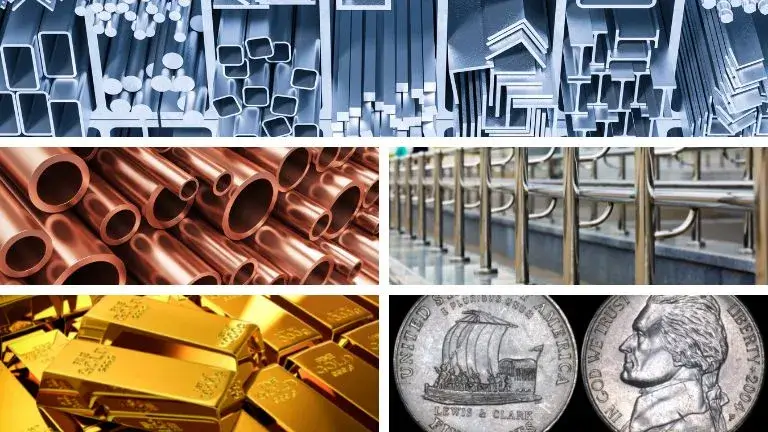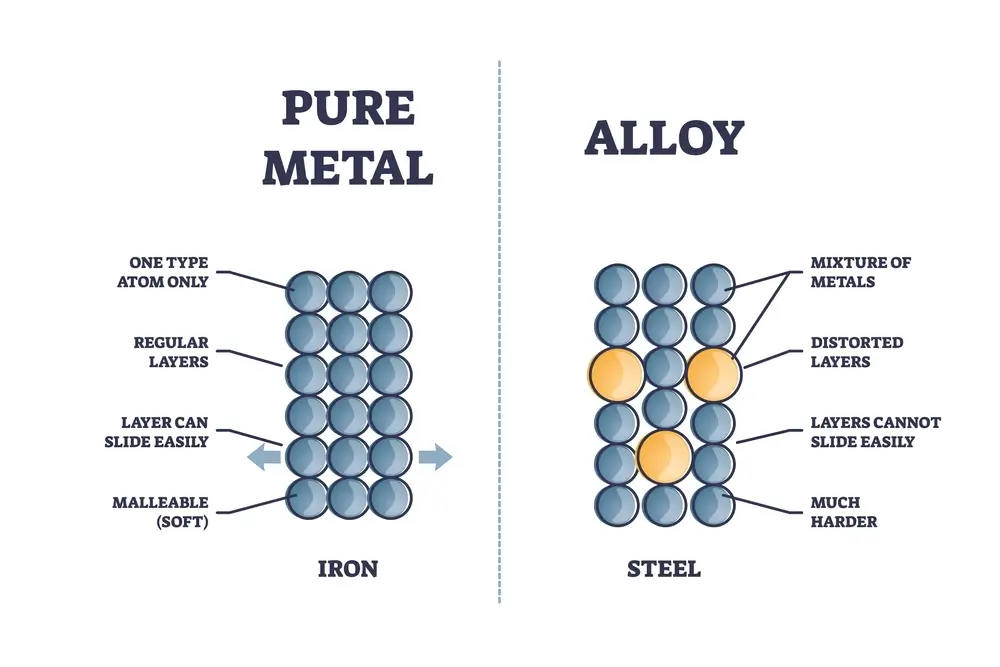Metals are shiny, dense materials that effectively transfer heat and electricity. The majority of metals are ductile and malleable, and they are often denser than other elements.
There are two types of metals: pure metals and alloys.
The difference between alloy and pure metal is that pure metal is a metal that is pure and composed of only one atom, while an alloy is a mixture of two or more particles or substances.
Let’s learn the definitions of alloy and pure metals:
Table of Contents
What is an Alloy?

An alloy is created by mixing one metal with two or more other metals or non-metals. The most typical method for combining metals into alloys is by melting them, mixing them, and letting them cool to room temperature before solidifying. As a result, alloys are created.
A variety of metallic atom types are used to create alloys. The metal alloy’s metallic bonding is not constant throughout. This differentiates the alloy from pure metals and makes it stronger.
Usage of Alloy
The usage of metal alloys is due to their usually improved mechanical or chemical properties. Metal can be alloyed with various elements to improve its hardness, strength, resistance to corrosion, machinability, and other qualities.
In daily life, metal alloys are used for a variety of purposes:
- Utensil production uses brass which is an alloy.
- Bells, utensils, and coins are all made of bronze.
- German silver is an alloy that is used in kitchenware.
- Rolled gold is used to make inexpensive ornaments.
Examples of Alloy Metals

Alloys are metallic mixtures composed of a single metal and one or more other metals or non-metals.
Some examples of typical alloys:
- Steel: A material made of carbon and iron (metal) (non-metal).
- Bronze: A mixture of the metals copper and tin (metal).
- Brass: A combination of zinc and copper (metal) (metal).
What is Pure Metal?

A pure metal substance only has atoms of one specific type of metallic element, such as aluminum, gold, copper, lead, or zinc.
The process of refining involves separating and purifying the metal from naturally existing minerals to generate pure metals and then condensing. However, some impurities will always be present in a high-purity substance.
Usage of Pure Metal
- Refined and fairly pure metals are used as a coating (plated) to provide a base metal with a unique surface quality.
- Electrical conductors are made of purified, unalloyed copper, silver, aluminum, and gold.
- Pure metals are also used to determine the composition of unknowns in laboratories using chemical standards.
- In the production process, different refined metals with known purity are combined to create alloys with special qualities.
Examples of Pure Metals

Examples of pure metals are:
- Aluminum
- Copper
- Chromium.
- Nickel
- Gold
Difference Between Alloys and Pure Metals

There are many differences between alloys and pure metals which are given below:
The primary difference between alloys and pure metals is that alloys are mixtures of two or more metals, whereas pure metals are pure substances that exist in their basic form.
Another difference between alloys and pure metals is that the melting point of pure metals is extremely high. But the melting point of these alloys is lower.
Alloy is an effective solution. As a result, the dislocation movements are reduced, and the material’s strength is raised. As a result, alloys are stronger than pure metals.
Alloys have lower thermal and electrical conductivities than pure metals. Example: copper and brass.
Alloys are harder to create than pure metals. Alloys are more resistant to corrosion than pure metals
What is White Metal?
Any mix of non-precious metal alloys are collectively referred to as white metal. They are also occasionally referred to as pot metal. White metal, which is often composed of the elements lead, zinc, cadmium, bismuth, and tin, is often used to coat commonplace items like cutlery, ornaments, bearings, medals, and household things.
The white metal is more readily available and less expensive than precious metals, yet the resulting glossy, metallic surface is still in high demand.
What is Meta Alloy?
Meta-alloys have a complex lattice structure. They were formed naturally and are cellular. They are significantly more powerful than, say, foamed aluminum.
Although technically alloys because of the large number of components that go into their formation, the composition varies depending on where the cell wall’s strength is needed.
They are excellent thermal insulators with a high melting point, but once melted, they lose all of their unique characteristics and turn into a typical alloy.
Identifying Metals and Alloys
Identifying Metals
The periodic table’s group VIII element, iron, is a metal. It is a silver-gray color and is glossy, ductile, and malleable.
On Earth, iron is the most common element and makes up a large portion of both the outer and inner core. Iron would not resemble what we think of it at all if it existed in its purest form. A magnetic test is the most basic way to determine whether iron is present.
Use a magnet to test the metal to determine whether there is any attraction; if so, the metal is probably made of iron.
Identifying Alloy
Applied Technical Services offers a precise method for alloy identification to identify the chemical composition of various materials.
Instead of being made up of only one kind of metal, alloys are a mixture of several different metals. For instance, iron, chromium, nickel, or molybdenum are the main elements present in most stainless steel. The procedure for alloy identification precisely detects the alloy’s component mixture.
Structure of an Alloy and a Metal
The three most prevalent crystal forms for metals and alloys are body-centered cubic (BCC), hexagonal close packed (HCP), and cubic close packed (ccp, also called face centered cubic, fcc). Metals are made up of a massive metallic structure. A metal is made of tightly packed atoms that are arranged in a predictable manner.
What is the Difference Between Alloys and Pure Metals?
Highlighting the main difference between alloys and pure metals in the following table:
| Pure Metal | Alloy |
|---|---|
| Pure metals are pure substances. | Alloys are a mixture of one or more elements. |
| Pure metals are soft. | Alloys are hard metals. |
| The corrosion of pure metals is low. | Alloys are more resistant to corrosion. |
| They have a high melting point. | Alloys have lower melting points than pure metals. |
Conclusion
To attain desired qualities that are not present in the pure elemental form of a metal, alloys of different compositions and components are created.
The difference between alloys and pure metals is that pure metals have a definite melting point, whereas alloys have a range of solidification temperatures rather than a fixed point at which they solidify.
See more: What is the Difference Between Metallic and Non-Metallic Minerals?

